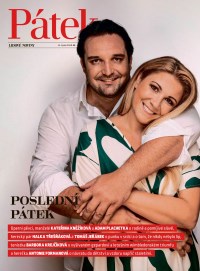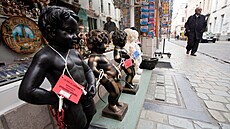LIFE IN THE BLUE
- 3. 5. 2024, 4:45

This films reveals the extraordinary variety of life found in the vast blue expanses of te open ocean. Here, all the action takes place in a 10 metre deep band of water, just under the surface. Many species use this section of water to migrate and hunt while others use ingenious ways to stay hidden where there appears to be no shelter. From the surface, the huge blue expanses of the open ocean appear to be devoid of all life. Popular belief is that most sea life congregates around mainline coasts, islands or rocky outcrops. But that perception is far from the truth. This 4K film,shot in the Atlantic, reveals the extraordinary diversity of species who call the open ocean their home and the tactics they use to survive in the watery wilderness. Most of the life here congregates in a nutrient-rich band of water, around 10 metres from the surface. But it is brutal life out in the open ocean. There is little shelter, big predators abound and food is hard to find. Only those who adapt to the conditions have a hope of surviving in the blue void. Barracuda are a common species in the open water and they travel in large spiraling groups close the surface as a defense mechanism against bigger predators. This space is also their own feeding ground and they can attack smaller fish en masse. And where there are barracuda, Blue sharks are never far away. These supreme open ocean predators are among the most graceful of sharks but when the need arises, they can transform instantly into ferocious and efficient killers. They regularly cross the Atlantic, coast to coast, in a journey of 4,000 kilometres. Other species profiled which also undertake huge journeys include turtles, pilot whales and whale sharks, and we reveal how the notorious Portuguese man o’ war provides shelter for small fish within its lethal tentacles. Other small fish of prey instinctively group together when they are threatened - as lone individuals they are far more likely to be eaten than large groups. But in dramatic close up action, a banquet is served as dolphins sprint in from the blue to harvest this massive source of protein. The film also reveals the amazing variety of life and colour found in shipwrecks. Like oases in the desert,these steel skeletons are colonized by soft and hard corals, attracting huge armies of small fish. They hide in the structures while larger fish and sharks roam the periphery.
Hlavní zprávy

Policie jde po majetku „nemajetného“ Kaderky. Zaměřila se i na manželku
Šéf Českého tenisového svazu Ivo Kaderka je vyšetřován ohledně jeho příjmů. Detektivy zajímají také příjmy Kaderkovy ženy Dariny a výdaje na rekonstrukci... celý článek

Srovnání průzkumů: Lidovcům umřeli voliči, Konečná v eurovolbách sráží ANO
Volební modely českých agentur, srovnané redakcí iDNES.cz za celý rok, mají jasno. Hnutí ANO si od roku 2023 do května 2024 drží zcela neotřesitelnou pozici a... celý článek

Obrat. Neučte už sporné teorie o 72 pohlavích, instruuje britská vláda školy
Britská vláda představila nové pokyny pro sexuální výchovu. Vyzývá v nich školy, aby přestaly učit sporné teorie fluidní genderové identity. Ministryně... celý článek














